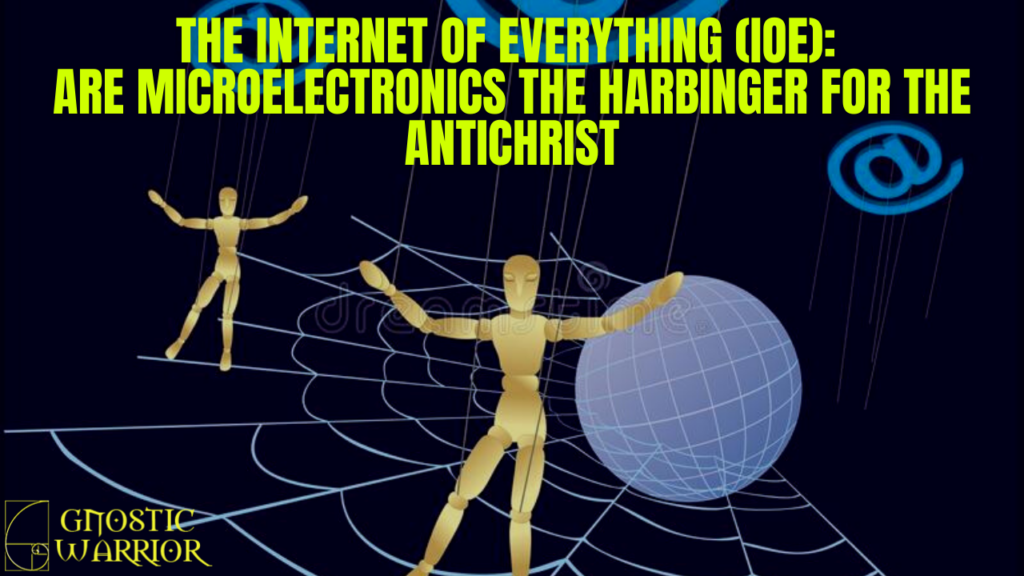On Christmas Monday in January 2019, the head of the Russian Orthodox Church, Patriarch Kirill, issued a dire warning that the internet was being used by the Antichrist to collect data including “location, interests, and fears,” which will make it possible for humans to be controlled by external forces.

He said, “The Antichrist is a personality that will be at the head of the worldwide web controlling the entire human race. Thus, the structure itself presents a danger,” he said.
Patriarch Kirill stressed that “if we don’t want to bring the apocalypse closer, there should be no single [control and access] center.”

“If not today, then tomorrow, methods and technology could appear that will not just provide access to all information, but will also allow the use of this information,” Kirill added. “Do you imagine what power will be concentrated in the hands of those who gain knowledge about what is going on in the world? Such control from one place forebodes the coming of the Antichrist.”
This a prophetic statement by the supreme leader of the Russian Orthodox Church because two years later, the U.S. Army Research Lab and the U.S. Naval Research Lab scientists recently created something very similar to what he described. Researchers from the military are now using cells from fungi/molds and various biological systems to make a living microbial internet they could “plug into” to create an electronically controlled biological local area network called BioLAN.
It is part of the Internet of Everything (IoE), a new project by the University of Cambridge that they claim will make “the seamless interconnection and autonomous coordination of a massive number of computing elements and sensors, inanimate and living entities, people, processes and data through the Internet infrastructure.”
Cambridge says this new microbial Internet has an enormous potential to transform the way we connect with and understand the Universe by enabling new methods of interfering with the processes at the single-molecular level, and extending the human consciousness and control with smart agents collaboratively sensing and acting upon the environments never explored by any other paradigm before.
What are microelectronics and how do scientists make a BioLan Network?
Researchers developed the process from the University of Maryland (UMD) in conjunction with the U.S. Army Research Lab, and the U.S. Naval Research Lab, according to Nature Nanotechnology.
“Together, they worked to create a microbial network they could “plug into” an external electronic system to interrogate and control biological function in real-time. The collaborative team crafted an electronic system and a community of engineered microbial cells to create an electronically controlled biological local area network, dubbed a BioLAN.
Local area networks (LANs) are computer networks ranging in size from a few computers in a single office to hundreds or thousands of devices spread across several buildings. These computers and devices are all linked together, sharing access to printers, file servers, and other services. LANs in turn, may be plugged into more extensive networks, such as larger LANs or wide area networks (WANs), connecting many computers within an organization to each other and/or to the Internet.
Similarly, the team’s the U.S. Army Research Lab and the U.S. Naval Research Lab will employ BioLAN to a network of engineered cells to convert information delivered via an electronic input into a biological response. In turn, that biological response conveys information across a microbial network to carry out network functions.
Here is the definition of a BioLan:
“Information flow through an electronically interfaced biological network a, Connectivity between electronics and a microbial community is established using biomolecular redox events to transduce bioelectronic signaling by simultaneously mediating electron flow and eliciting biological interactions.
The result is an electronically controlled BioLAN that propagates the signal across microbial subpopulations and onto external environments for multiplexed actuation. One subpopulation transduces received information into an electronic output that returns BioLAN system status and a second produces biological outputs.”
According to researchers at the US Army and Navy, one such function is verification that the electronic signal was successfully translated to carry out a biological response. To make this verification possible, the team created a terminal electronic output that confirms that the original “message” was delivered to the appropriate target, similar to how a “read receipt” functions for email.
Researchers at the Internet of Everything (IoE) are interested in these areas of this new science:
Intrabody communications and Internet of Bio-Nano Things
Energy Harvesting and Internet of Energy Harvesting Things
Energy/Spectrum Efficient Communications
Internet of Sensing Things
5G communications and 5G Internet of Things
Internet of Vehicles
Internet of Space (1)
To check out more research on this project, click on this link to connect to Cambridge’s database of papers.
SOURCES:
2. https://eng.umd.edu/news/story/the-internet-of-bionano-things

Moe is the founder of GnosticWarrior.com. He is a father, husband, author, martial arts black belt, and an expert in Gnosticism, the occult, and esotericism.









